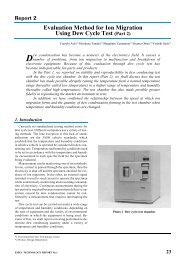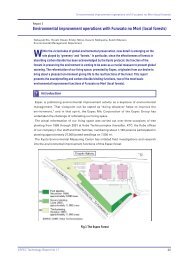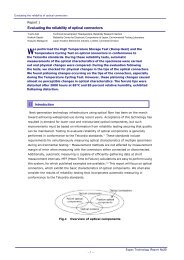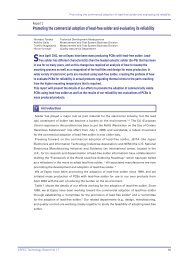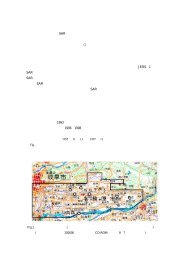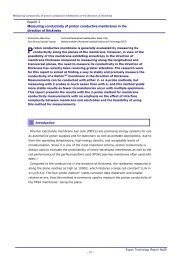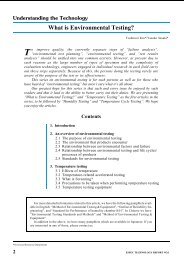download
download
download
Create successful ePaper yourself
Turn your PDF publications into a flip-book with our unique Google optimized e-Paper software.
Evaluating the reliability of optical connectors<br />
6-4 Observation of the tip shape<br />
Fig.9 shows the results of observations made on the shape of the ferrule tip before and<br />
after the High Temperature Storage Test (Damp Heat). After 2000 hours at 85°C and 85<br />
percent relative humidity, the surface of the ferrule tip showed signs of pitting and was<br />
rougher than before testing. This roughness did not appear on the surface of the tip after<br />
the Temperature Cycling Test, leading to the conclusion that the roughness was caused<br />
by humidity. Fig.10 shows a three-dimensional computer graphics rendition of the shape<br />
of the tip. After 2000 hours at 85°C and 85 percent relative humidity, the ferrule tip<br />
exhibited flattening distortion. However, pistoning measurements with the Ferrule Tip<br />
Condition Surveyor measured the position of the apex of the tip from the sphericity of the<br />
ferrule tip, and, using that position as a standard, calculated the amount of pistoning.<br />
Accordingly, if the position of the tip section differs from these measurements, the<br />
amount of pistoning could be greater than that calculated.<br />
(a) Initial period<br />
(b) After testing<br />
Fig.9 Ferrule tip observation (85°C, 85%rh, 2000 h)<br />
(Initial period) (-40 /85°C, 500 cycles) (85°C, 85%rh, 2000 h)<br />
Fig.10 Three-dimensional shape of the ferrule tip<br />
- 9 -<br />
Espec Technology Report No20



